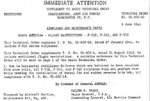fastmongrel
1st Sergeant
I had always thought the dorsal fin mod to the the P-51 only came in with the P-51D but I have just come across a photo on google of a flight of RAF Mustang IIIs

Had a look for some more info on this but no luck. Were they changeover aircraft built using a mix of parts or was this a service modification. Any info would be great as I am thinking of building a Malcolm canopy Mustang III and might consider modding the kit.
Had a look for some more info on this but no luck. Were they changeover aircraft built using a mix of parts or was this a service modification. Any info would be great as I am thinking of building a Malcolm canopy Mustang III and might consider modding the kit.






